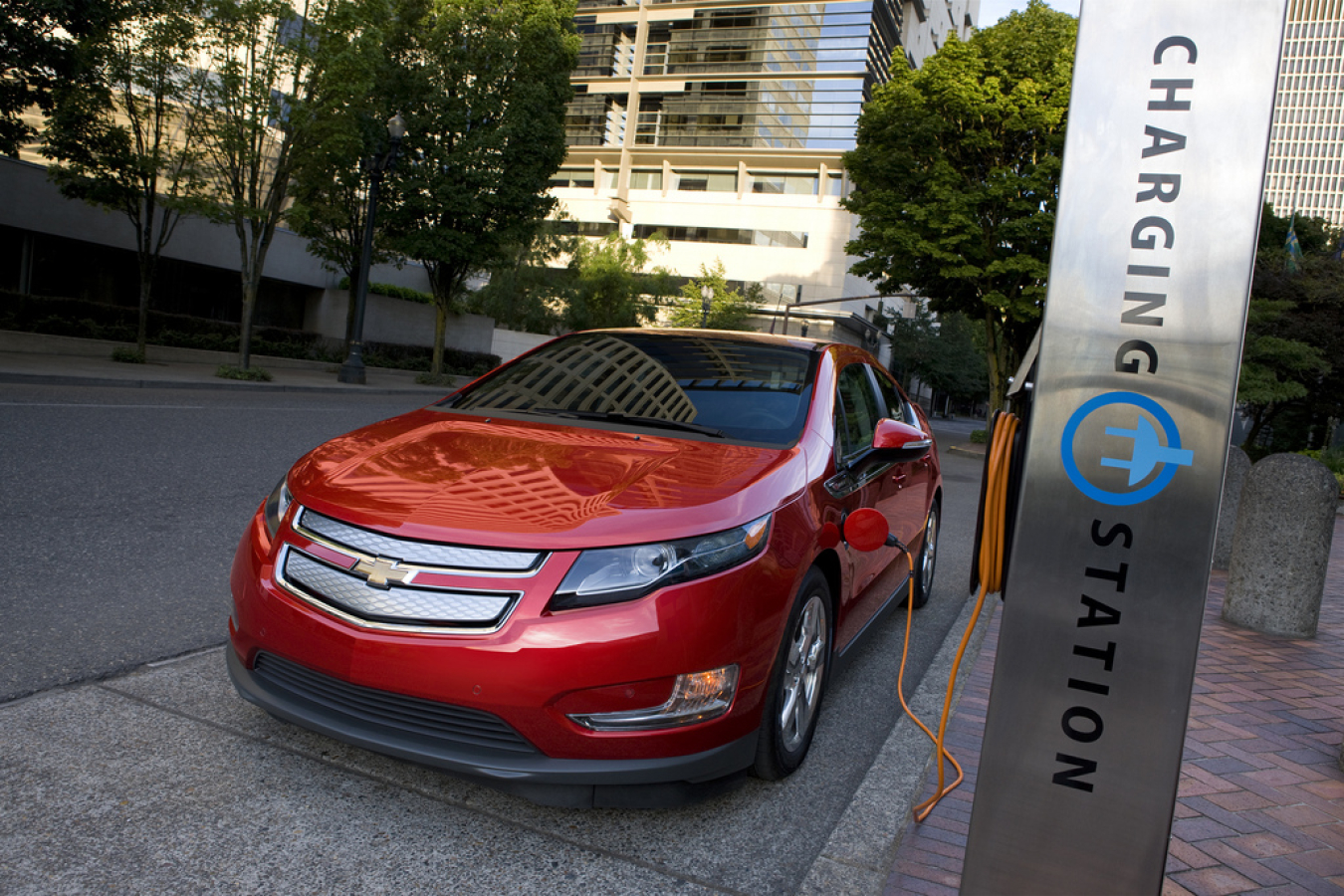
The 2011 Chevrolet Volt at a charging station. Its battery is based on a cathode technology developed at Argonne National Laboratory, which will make the battery safer, longer-lived and more powerful. Photo courtesy of General Motors
Increasing the number of plug-in electric vehicles on America’s roads can help reduce our dependence on petroleum, improving our economic, environmental, and energy security. But without research undertaken at Argonne National Laboratory, supported by EERE’s Vehicle Technologies Office (VTO), PEVs may have had a very different, slower introduction to the market. Today, batteries in both the Chevrolet Volt and the Ford Focus EV use technology that was originally developed at Argonne.
Starting in early 2002, VTO supported research at Argonne to develop a new type of cathode for lithium-ion PEV batteries. Cathode materials are key components that play a critical role in determining how much energy a battery can hold, how quickly it can be translated into usable power, and how well the battery maintains its maximum charge over the course of its lifetime. Research over the course of eight years resulted in a new nickel-manganese-cobalt cathode in 2010. Members of this cathode material ‘family’ can operate at higher voltages and achieve much higher specific capacities than conventional cathode materials, resulting in batteries with higher energy density. Because the batteries can store more energy, manufacturers can either use fewer batteries per vehicle, lowering cost, or achieve a longer all-electric range with the same number of batteries.
After developing the cathode, Argonne licensed the technology to BASF, LG Chem, General Motors, Envia, and TODA. Currently, LG Chem is producing batteries that use this technology in combination with other unique fuel? cell technology LG Chem developed with VTO’s support.
Both the original and next-generation Chevrolet Volt use batteries with this technology, as well as the Ford Focus EV. In fact, LG Chem has further improved on this chemistry for the next generation Volt, which has a 39% higher all-electric range while using substantially fewer battery cells. In collaboration with Argonne, VTO is continuing to support research into batteries that will further increase PEV range, lower cost, and improve performance.
The Office of Energy Efficiency and Renewable Energy (EERE) success stories highlight the positive impact of its work with businesses, industry partners, universities, research labs, and other entities.
